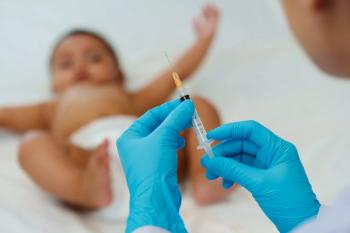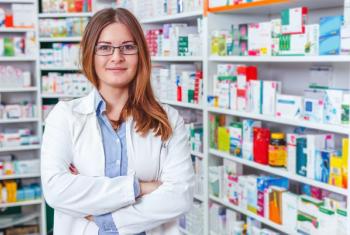
Been there, done that, got the message
Some conclusions about pharmacy practice then and now, from an RPh who has weathered it all
By Truman Lastinger, RPh
One of our favorite pen pals here at Drug Topics is Truman Lastinger, a walking history of pharmacy practice, who started out as a soda jerk (remember them?) and moved on to helping the druggist mix up an assortment of home remedies out of ingredients that today sound quaint, to say the least.
Truman has kept a sharp eye on developments in the profession, and his comments are equally sharp. We’ve been stockpiling them for a while and have decided that it’s time to throw them all together here.
We lead off with an evocative description of a style of pharmacy practice that has now all but vanished.
The golden age
I started working in a pharmacy in a town in rural South Georgia in 1954. The business district was centered around the courthouse square. There were six drugstores located around the square. Most of the stores had two pharmacists, and the largest two stores had four.
I started out as a soda jerk in a store where we often mixed and administered doses of medicine. I remember the aspirin, headache powders, castor oil, ammonia cokes, three bromides, and raw eggs in milkshakes, etc. The cokes we dispensed were handmade from syrup and carbonated water.
We had customers who still came in asking for “a dope,” their name for a coke. They were harkening back to a time before the Harrison Narcotic Act of 1914 removed the cocaine from Coca Cola.
Mixing and measuring: I was quickly moved to the pharmacy, where my job consisted of assisting the pharmacists and measuring out and labeling wets and drys for sale.
We poured up spirits of ammonia, iodine, mercurochrome, castor oil, liniments, etc. We measured out Epsom salts, lime, stomach powders, douche powders, and most everything that was needed for home remedies.
Most of the pills we dispensed went out in slide boxes. The liquids were dispensed in glass bottles with cork stoppers. The labels were typed and glued on. One druggist across the square still used a number two pencil to write out his labels by hand.
We used white wrapping paper to wrap packages because there were no paper bags. In fact, we used what was commonly known as the pharmacist’s wrap. This wrap was securely fastened through folding the paper in such a way that no string was needed to hold it. String was used when the package was too large for the pharmacist’s wrap.
We mixed or compounded 40% to 50% of the prescriptions we dispensed. This included pills, suppositories, eyedrops, eardrops, liquids, suspensions, powders, charts, lozenges, and gums.
Most of our customers had prescriptions from their doctors; however, many of them just asked for some remedy for whatever ailments they had. The pharmacist would listen to their problems, ask a few questions, and then either sell them a remedy or make one up for them. As a result of this experience, I fell in love with pharmacy and have loved it ever since.
The art of pharmacy: Back then, I felt that pharmacy practice was an art as well as a science. All the pharmacists I knew were proud of their profession. They were always available for their customers.
Sure, we dealt with a product. We also made a profit off this product. And we shared our knowledge of the human body and its predicaments with our customers when we were asked.
We worked long hours and were open on weekends. We always went home after work feeling good about ourselves and what we were doing. We made enough profit so that we could hire sufficient staff to get the job done.
Today, I still recommend or make products for people who need help. I have always tried to help people to improve their lives through better health.
Starting down the slippery slope: Then along came academia and our professional organizations, telling us that if we expected to be recognized as professionals, we should charge a professional fee for our services.
That they convinced the majority of pharmacists to accept such a situation has always puzzled me. Whether we liked it or not, we were and are still dealing with a product.
Pharmacy was hindered by law from agreeing on prices for these products. The advent of the professional fee was in fact a price fix. It gave us no control over the cost of our product, but in effect locked us into a fixed markup.
With the decrease in profit percentage, all the stores had to begin cutting staff in order to stay in business. In my opinion, this has led to pharmacy becoming an assembly-line job instead of a profession.
Sliding faster and faster: The general acceptance of lower professional fees offered by the PBMs has continually eroded the art and science of pharmacy in the eyes of the public.
Most of our public now sees the pharmacist as someone who should get their prescriptions to them immediately. The fact that we have to call their physicians in order to clear up MD-created inaccuracies is not relevant.
The fact that we are bombarded with having to fill more prescriptions per hour than we are capable of does not register with them.
When we cannot get their insurance companies to give us answers about drug coverage, and when they wind up requiring a different drug or prior approval, it is our fault.
Hitting rock bottom: Pharmacy in general has turned our business over to the insurance companies. These companies only want more and more money from their customers, and they demand and get more from the pharmacy.
Pharmacy accepts anything that is offered by the PBMs that are functioning for the insurance companies and the drug companies.
More work, no compensation: In order to increase profits, the chains are now demanding that their pharmacists do MTM, give injections, and do cholesterol screening and A1C checking. This is supposed to be considered more clinical. The remuneration for these services goes to management, not to the pharmacist.
It is physically impossible for a pharmacist to fill 30 prescriptions per hour and do all these things required by the management.
Between a rock and a hard place: I do not see pharmacy getting itself out of the rut it is in. I only worked part-time for a chain for the last few years, and I cannot believe what the profession has become.
In 1968, I predicted what is happening now. Even then I felt strongly that we should continue charging a fair markup, because we were dealing with a product over which we had no say.
We could not initiate the use of the product or determine the quantity of the product. We could not decide who would receive our product. By law we were restricted to just selling a product.
In fact, at that time we were actually instructed not to discuss the medication we were dispensing with the patient, and we could not put the name of the drug on the label.
In pharmacy school we were taught the structural formulas of the drugs and what they do in the body, yet when we tried to intervene with the prescribers, they said that the drug companies had told them they were prescribing the best drug available. They told us, “I know what I am doing. Just dispense the drugs I write.”
All that training - for what? I quickly came to realize that we were grossly overeducated for what we could do in our profession and that the existing laws prohibited us from putting to use most of what they taught us.
The adoption of the professional fee did not get us professional status as we had been led to believe. Therefore academia decided that we should have a doctoral degree. With a doctor’s degree, then we would be professionals.
So the schools went to the PharmD program and really overeducated us, in comparison to what we could legally do.
No pay and no say: “Clinical pharmacy” sounds really good, but nobody wants to pay for our services, because we still cannot control any part of the health services we can provide.
This development, along with the availability of unlimited student loans, has caused a proliferation of pharmacy schools that are now producing more graduates than can possibly be employed, what with the staff reductions made by the chains and independent pharmacists.
The bottom line: We may be professionals, but there is no way we can charge or be paid for our knowledge and service.
The PBM squeeze: The fear that a competitor will get more business has caused pharmacies to accept any offer made by the PBMs.
For a few years, pharmacies could continue to make a profit by lowering staff and reducing overhead. The result has been a situation in which we pay more for many medications than we receive in reimbursement for the prescriptions we dispense.
According to one article I read, a pharmacy’s largest insurer reduced its average gross margin by 40% to 50%. He says this practice makes business unsustainable not just for that individual pharmacy but for pharmacies throughout his state.
Recognizing this, the pharmacy profession is trying to establish MTM and REM in order to increase profits. These profits are needed for the successful operation of the business.
The long-range problem with MTM is that in the smaller communities the doctors will recognize that pharmacists are correcting their prescribing habits and will begin to be more selective in their prescribing. This diminishes the drug situations available for pharmacists to address.
Second verse, same as the first: The drug companies and the insurance companies with their benefit managers are making the profits off drugs. They are establishing and demanding more mail order, and shortly they will need chains and independents only for emergency distribution of drugs.
In fact, Pfizer has entered into an agreement with CVS’s PBM whereby they will sell their drug directly to the public, with CVS handling the business end. This cuts retail pharmacy out of the picture completely.
Look at what’s left: Grocery stores and mass merchandisers have taken the front-end business from both the chains and the independent pharmacies. The soda fountains have given way to the fast-food industry. This leaves pharmacy with a situation in which it is selling its main product at a loss. How long can that go on?
* * * * * * *
Our publication of Dennis Miller’s article “Why I wrote
Why the general public may not read Dennis Miller’s book, “Pharmacy Exposed”: Many of Dennis’ stories reappeared throughout the book’s 750 pages. I realize that his book primarily represents a diary, so this explains why some of the stories are repeated.
In my experience, too many of my customers read only at the third-grade level. This includes even college graduates.
I feel that more than 60% of the reading population will not even try to read his book because of its size, yet these are the people who need to read it.
Ignorance of history generally leads to repetition of the same mistakes. This may be why I harp on what got us into this mess.
Dennis is so right about chain pharmacy: I agree with Dennis’ representation of chain pharmacy. I owned my own drugstore for many years, before selling out to a chain. Then I worked for the chain for a while.
I was totally blown away by the way chain pharmacy is practiced. I agree that the chain pharmacist has no say in the operation of the pharmacy, yet the pharmacy manager is held accountable for its financial success.
Mechanization = staff shrinkage: When I started working with a big chain part-time, we had plentiful techs and pharmacists.
I was amazed at the mechanical way in which we worked at the chain store. Everything was controlled by a computer - even the counting of the pills. The computer even told us what size vial to put the pills in.
In a very short time the tech help was reduced to bare bones, and suddenly there were only two pharmacists to cover a 16-hour day.
The reality of counseling: The law says that a pharmacist must counsel on every prescription, unless the customer refuses it. If the customer refuses it, you must document the fact.
There is no way this is going to happen. It is a physical impossibility when you fill over 200 prescriptions on your shift.
Prescriber status - the missed opportunity: In my mind this would have given pharmacists a way to charge for their services. Without a way to charge for your decisions, pharmacy is tied to a product. That makes pharmacy a mercantile business.
If you cannot make a decision about the dispensing of a product, you can only charge for the product.
Our product prices are now controlled by third parties, due to the wholesale acceptance of any contract in order to save business.
This puts pharmacists on an assembly line, just like the people who work in the automobile industry.
What would help? Maybe unionization would be a good thing if it helps improve working conditions in the drugstore, but it really destroys any concept of professionalism.
Here we go again: Chains have dug themselves into the same hole they put independent pharmacy into.
In the guise of going more clinical, they are demanding that their pharmacists do MTM, BP checks, cholesterol checks, and A1C checks, and they are billing for these services to offset income lost to low reimbursement rates.
The chain pharmacists, in reality, do not have time to do all this and keep up with the expected Rx turnout.
Furthermore, the pharmacists do not receive any of the payment that is charged for supplying these services. The compensation benefits only the owners.
Now we’re fake feds: One chain now has begun what they call “good-faith dispensing.” Ostensibly this is designed to cut down on drug diversion and overuse by addicts.
It takes a good five to six minutes to detail, document, and report certain narcotic prescriptions in order to complete this process. In my opinion, management is making the pharmacist perform the function of the DEA and the task of monitoring MD prescribing.
The pharmacist glut: The oversupply of pharmacists is a result of the shortage of pharmacists that we saw just a few years ago.
That shortage was caused by the demands of rapidly expanding chains for more pharmacists to support their new stores.
Suddenly pharmacy schools began expanding and new ones were popping up in order to meet the apparent demand.
Nowadays any student who gets accepted is guaranteed the ability to pay whatever tuition is charged simply through the use of student loans.
This whole process is driven by profits.
Truman Lastingerlives in Suwannee, Ga. Contact him at truros@att.net.
Newsletter
Pharmacy practice is always changing. Stay ahead of the curve with the Drug Topics newsletter and get the latest drug information, industry trends, and patient care tips.











































































































































































































